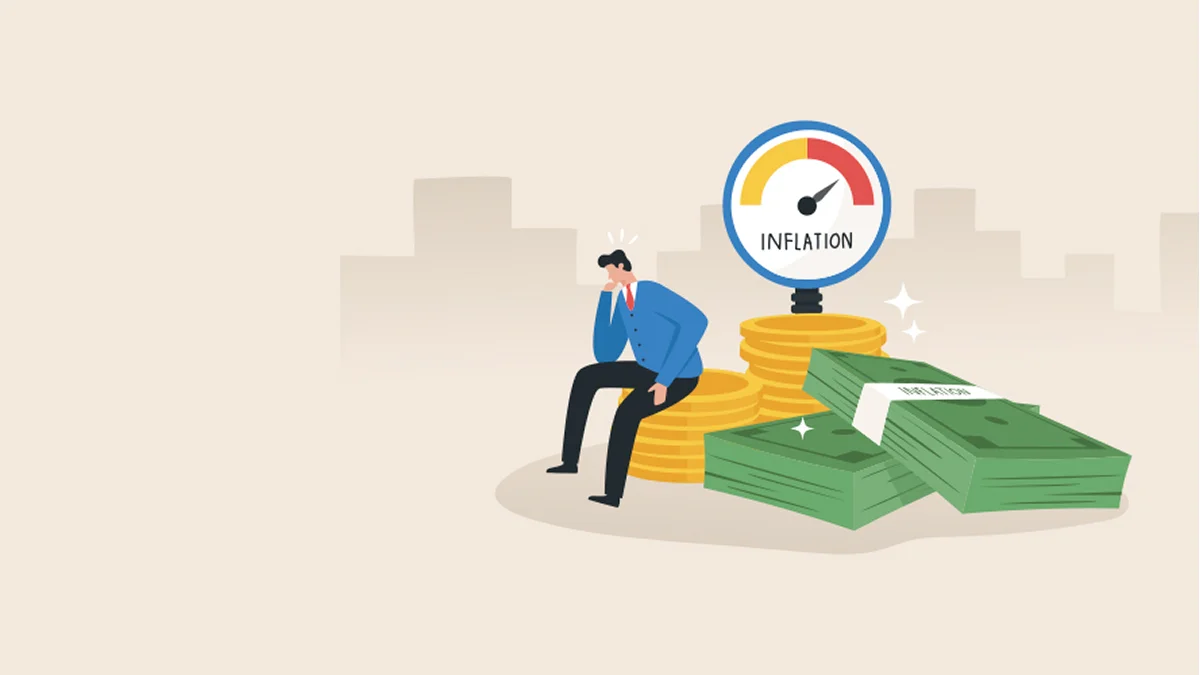India witnessed an increase in inflation leading to an overall increase in prices. As the effects of inflation reshape the economic landscape, borrowers face a unique set of challenges and opportunities. Ever wondered how inflation, the silent economic force, influences your borrowing decisions? How to manage the effects of inflation? This blog unveils how inflation affects borrowers and how to smartly manage its impact. Read on!
How Does Inflation Affect Borrowers?

Inflation can work in favour of borrowers, boosting the value of money borrowed compared to the remaining debt owed. This benefit is more pronounced in extended loans like mortgages and student loans.
Smaller loans, such as poor credit instalment loans, are less impacted. For borrowers with asset-backed loans, the advantages extend further – not only is the debt value reduced by inflation, but the subsequent sale of the asset can yield higher returns, especially during inflationary periods. On that note, let’s understand the effect of inflation on existing and new borrowers:
Effect of Inflation on Existing Borrowers
If high inflation coincides with a simultaneous increase in employee wages, repaying existing debt becomes more manageable. The fixed EMI amount remains unchanged, and with a salary hike, you have more disposable income. Despite the inflation, you will be able to pay the EMIs as per the agreed terms with lenders and ensure timely loan repayment, thus safeguarding your credit score.
Effect of Inflation on New Borrowers
One of the biggest impacts of inflation is that it significantly affects the borrowing landscape as financial institutions hike interest rates, resulting in high EMIs. This is particularly observed for long-term loans. However, getting short-term credit facilities, like credit cards and a Personal Loan, can be relatively more cost-effective during inflation than longer-term loans.
How to Manage the Impact of High Inflation on Loan Repayment?
To effectively counter the challenges posed by the high inflation rate on loan repayment, consider implementing the following strategies:
Prepay Your Loan
Combat the effect of inflation by settling your existing debts promptly. Extra payments not only decrease the outstanding amount but also diminish long-term liabilities, resulting in lower EMIs. However, be cautious of additional charges and loan lock-in periods. Make sure to consult with your lender before opting for prepayment.
Avail Better Rates and Offers
A direct and immediate consequence of inflation is increased interest rates. However, many financial institutions may offer competitive rates to attract borrowers during inflation. So, thoroughly research lenders with favourable interest rates or consider transferring your loan to the one offering better terms.
Opt for a Long Repayment Tenure
To navigate the rising cost of living during inflation as well as repay the credit on time, opt for a longer repayment tenure. This reduces monthly payments, making it easier for you to arrange funds and pay your EMIs on time. The freed-up funds can be directed towards lucrative investment opportunities to meet increased lifestyle expenses.
Choose to Refinance Loans
Replace an existing lender with a new one offering more favourable terms on their loan products. This strategic move, also known as loan refinancing, allows borrowers to access lower interest rates, making loans more affordable. However, before refinancing, consider negotiating with your lender for improved terms to better align with your current financial situation.
Opt for a Fixed Interest Rate
You can safeguard yourself against the effects of inflation by opting for a fixed interest rate. Unlike variable rates susceptible to inflation, a fixed rate remains stable throughout the loan term. This choice not only shields against inflationary effects but also aids in precise budget planning.
Before we come to a close, you must also be aware that inflation also affects lenders. Find out how it affects lenders and how the protective measures could impact you.
How Does Inflation Affect Lenders?
Inflation poses challenges for lending institutions, prompting countries to adjust financial instruments like the Current Reserve Ratio (CRR), Repo Rate, and Statutory Liquidity Ratio (SLR) to regulate the economy's money flow.
The Reserve Bank of India increases the repo rate to keep a check on inflation. Consequently, financial institutions experience a reduction in cash flow. This elevated repo rate compels financial institutions to incur higher interest when seeking short-term liquidity from the central bank.
To safeguard profitability, financial institutions subsequently raise commercial lending rates. This step makes it challenging for new borrowers as they will have to avail a credit at increased rates and pay a high interest to repay the loan.
As a result of these policy adjustments, inflation impacts both borrowers and lenders. New borrowers face higher costs due to an increased Repo Rate, making loans more expensive. Conversely, existing borrowers benefit from unchanged interest rates and EMIs, maintaining their advantage from pre-inflation low-rate agreements.
To Conclude
Inflation creates a complex situation for borrowers, offering both opportunities and challenges. While existing loans can benefit from a deflating rupee, new borrowers face higher costs. Understanding these dynamics and employing strategies like prepayment, refinancing, and fixed-rate options can help you navigate through the effects of inflation.
In case you are looking for a hassle-free loan with minimal documentation, no hidden charges, and quick approvals, check out Poonawalla Fincorp’s Personal Loan, Business Loan, Professional Loan, Loan Against Property, and more. Fulfil your dreams because with Poonawalla Fincorp, you can!
We take utmost care to provide information based on internal data and reliable sources. However, this article and associated web pages provide generic information for reference purposes only. Readers must make an informed decision by reviewing the products offered and the terms and conditions. Loan disbursal is at the sole discretion of Poonawalla Fincorp.
*Terms and Conditions apply